I want to display chart inside my GTK4 application. I'm mixing C GTK with C++ library pbPlots and rest of the code. Unfortunately I get some garbage image.

Vast majority of chart generation example codes is not compatible with GTK4. Writing image to file and reading it to GTK Image widget is quite silly.
g++ $( pkg-config --cflags gtk4 ) -o chart chart.cpp pbPlots/pbPlots.cpp pbPlots/supportLib.cpp $( pkg-config --libs gtk4 )
#include "pbPlots/pbPlots.hpp"
#include "pbPlots/supportLib.hpp"
#include <gtk/gtk.h>
static void activate (GtkApplication* app, gpointer user_data)
{
GtkWidget *window;
window = gtk_application_window_new (app);
GtkWidget *grid = gtk_grid_new ();
bool success;
StringReference *errorMessage = CreateStringReferenceLengthValue(0, L' ');
RGBABitmapImageReference *imageReference = CreateRGBABitmapImageReference();
std::vector<double> xs{-2, -1, 0, 1, 2};
std::vector<double> ys{2, -1, -2, -1, 2};
ScatterPlotSeries *series = GetDefaultScatterPlotSeriesSettings();
series->xs = &xs;
series->ys = &ys;
series->linearInterpolation = true;
series->lineType = toVector(L"dashed");
series->lineThickness = 2;
series->color = GetGray(0.3);
ScatterPlotSettings *settings = GetDefaultScatterPlotSettings();
settings->width = 600;
settings->height = 400;
settings->autoBoundaries = true;
settings->autoPadding = true;
settings->title = toVector(L"x^2 - 2");
settings->xLabel = toVector(L"X axis");
settings->yLabel = toVector(L"Y axis");
settings->scatterPlotSeries->push_back(series);
success = DrawScatterPlotFromSettings(imageReference, settings, errorMessage);
std::vector<double> *pngdata;
if(success){
pngdata = ConvertToPNG(imageReference->image);
//WriteToFile(pngdata, "example2.png");
//DeleteImage(imageReference->image);
}else{
std::cerr << "Error: ";
for(wchar_t c : *errorMessage->string){
std::wcerr << c;
}
std::cerr << std::endl;
}
unsigned char* buffer = DoubleArrayToByteArray(pngdata);
GdkPixbuf *pixbuf = gdk_pixbuf_new_from_data(buffer, GDK_COLORSPACE_RGB, FALSE, 8, settings->width, settings->height, settings->width * 3, NULL, NULL);
// GdkPixbuf* pixbuf = gdk_pixbuf_new_from_file("test.png", nullptr);
GtkWidget* image = gtk_image_new_from_pixbuf(pixbuf);
gtk_widget_set_size_request (image, settings->width, settings->height);
gtk_widget_set_hexpand(image, TRUE);
gtk_grid_attach(GTK_GRID(grid), image, 0, 0, 1, 1);
gtk_window_set_child (GTK_WINDOW (window), grid);
gtk_window_set_title (GTK_WINDOW (window), "Window");
gtk_window_set_default_size (GTK_WINDOW (window), settings->width+10, settings->height+10);
gtk_widget_show (window);
FreeAllocations();
}
int main (int argc, char **argv)
{
GtkApplication *app;
int status;
app = gtk_application_new ("org.gtk.example", G_APPLICATION_DEFAULT_FLAGS);
g_signal_connect (app, "activate", G_CALLBACK (activate), NULL);
status = g_application_run (G_APPLICATION (app), argc, argv);
g_object_unref (app);
return status;
}
